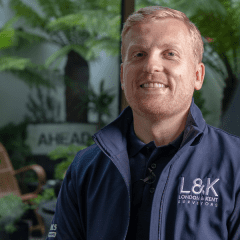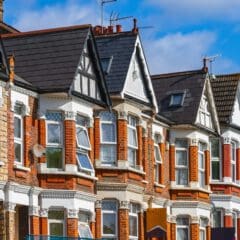Behind the scenes of property inspections, unexpected surprises, and protecting buyers from costly mistakes.
When people think of a residential surveyor, they might imagine someone tapping walls with a stick or scribbling notes on a clipboard. It’s a dynamic, detail-driven job that plays a vital role in helping people make one of the biggest decisions of their lives, buying a home.
So, what does a typical day look like for a residential surveyor? At London & Kent Surveyors, no two days are ever the same but here’s a glimpse behind the scenes.
8:00 AM – Start the Day with a Plan (and Coffee)
The day begins with reviewing the day’s bookings and prepping the equipment: digital camera, damp meter, laser measurer, torch, ladder, and our trusty surveyor’s notebook.
We double-check addresses, client instructions, and any particulars from the estate agent or solicitors. For example, if we’re surveying a Victorian terrace or a modern flat, we tailor our approach accordingly.
9:30 AM – First Site Visit: Homebuyers Survey
We arrive at a 1930s semi-detached house for a Level 2 Homebuyer Survey. The vendor lets us in, and we begin with a full external inspection: roof condition, pointing, drainage, windows, and any visible cracks.
Inside, we systematically inspect each room, checking for signs of damp, settlement, faulty electrics, or roof leaks. We lift inspection hatches where accessible, inspect lofts, and note anything that could affect the structure, safety, or value.
Each finding is photographed and documented for the report. We often spend an hour or two on site, depending on complexity.
12:00 PM – Second Survey: Historic Cottage with Character (and Concerns)
This one’s a charming older property, full of beams, sloping floors and potential issues. Older buildings often need a more detailed Level 3 Building Survey due to their age and construction.
We take extra time with timber framing, roofing, and foundations. Part of the challenge and reward is knowing what’s normal for an older property versus what might indicate costly structural problems.
We also look for signs of damp, woodworm, roof spread, and movement that can come with age.
1:30 PM – Client Calls and Consultations
We often speak with current or prospective clients answering questions like:
- “What does this crack mean?”
- “Should I still buy the house if the roof needs work?”
- “Do you offer help negotiating based on your findings?”
Clear communication is just as important as technical knowledge. People are looking for reassurance and understanding, especially first-time buyers.
3:00 PM – Back to the Desk: Report Writing
Back at the office, it’s time to write the survey reports. Each report is tailored to the client and explains any issues clearly, with recommendations and photos. We aim to be thorough, but not overwhelming, translating technical findings into plain, actionable advice.
We call clients to walk them through the findings, especially if serious defects are uncovered.
5:00 PM – Wrapping Up
The day ends with follow-ups and preparing for tomorrow’s surveys. There’s often admin to tackle and CPD (Continuing Professional Development).
Why We Love It
Samuel Carrassco stated “Being a residential surveyor is about more than just bricks and mortar. It’s about helping people feel confident and informed, whether they’re buying their first home or their forever one.
It’s technical, yes but it’s also about trust, integrity, and delivering peace of mind at a crucial time in someone’s life.”
Thinking of booking a survey?
Let us help take the stress out of your property purchase with a friendly, expert inspection and honest advice you can rely on.


